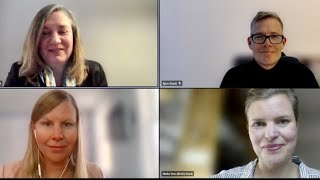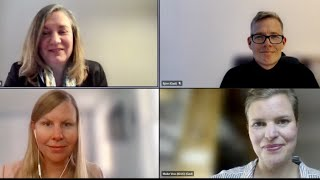Review: Webinar "Global Health Architecture post-COVID" on 3 March 2022

How to Reduce the Fragmentation of the Global Health Institutional Landscape and Strengthen the WHO’s Role? Review of our Webinar “Global Health Architecture post-COVID"
An expert’s view: recommendations for the future
On 3 March 2022 the Global Health Hub Germany hosted a discussion on “Global Health Architecture post-COVID: Curse or Blessing for Reducing Fragmentation and Strengthening the WHO in Pandemic Preparedness and Response”. This webinar is part of the hub’s discussion series “Shaping Health Globally – from the German Global Health Strategy to Shared Commitment”. The event put a spotlight on opportunities and challenges of strengthening the global health architecture and how to improve governance and financing of pandemic preparedness and response. The coordinating mandate of the WHO is an important priority for the Federal Government of Germany. But the Covid-19 pandemic has exposed many weaknesses in the global health architecture, including fragmentation and inequalities. Better financing is needed for global pandemic preparedness and response, while at the same time opinions on the concrete design of resource mobilization and the financing structure differ.
The speakers shared their perspectives about the options on the table and their potential for reducing fragmentation of the global health institutional landscape and for strengthening the WHO’s central role. Three highly knowledgeable guests contributed their points of view: Kate Dodson (Vice President for Global Health Strategy at the United Nations Foundation), Amanda Glassman (Executive Vice President of Center for Global Development (CGD), CEO of CGD Europe, and Senior Fellow at CGD) and Björn Kümmel (Deputy Head of Unit, Global Health Policy, German Federal Ministry of Health). The webinar was moderated by Maike Voss (Managing Director, German Alliance on Climate Change and Health). The experts gave insights into the past and current situation and expressed recommendations for the future.
What is key for shaping the global institutional landscape
At the centre of the discussion has been the nexus of improving global pandemic preparedness and response while at the same time reducing fragmentation and duplication in the global institutional landscape. Furthermore, the experts discussed the role of the WHO at the interface of these two aims in shaping the future global health architecture.
Amanda Glassman focussed on some major challenges of the global health architecture and said: “New financing is great, but we also need to have the framework and the incentives in place to ensure the financing is working in a way we think it is helpful. If there would be an international treaty, money should be used to help meet those standards that all countries have agreed to. We also need accountability measures alongside for verification of meeting those standards.”
Do we need an international pandemic treaty?
Internationally, a new pandemic treaty is currently being discussed and with it financial incentives to strengthen pandemic preparedness. Kate Dodson shared her vision how the treaty could improve equity: “It is no easy task, but a pandemic accord could address the norms around equitable access to countermeasures. This is not just about vaccines or novel therapeutics. It is about the basics such as personal protective equipment.” Kate Dodson also underlined the role of civil society in changing in global health architecture in general: “It requires a unity of voice and a unity of push! Civil society has a really indispensable role to play in preparedness and response. There needs to be more space on the decision making table.”
More effective and more inclusive, less fragmented and better coordinated
One important priority area of the German Global Health Strategy is the further development of the Global Health architecture with a central role of the WHO. Björn Kümmel, who has helped devise this strategy, pointed out: “We need a package deal. This package needs to ensure that global health governance post-COVID is more effective, more inclusive and less fragmented, less duplicated and as best coordinated as possible.” Björn Kümmel also mentioned that the WHO is facing a funding gap, which undermines its leading role in preparedness and response: the contingency fund, the work force emergency programme, and huthe polio eradication programme are chronically underfunded. “Civil society has a crucial role to play here. Huge investments in the WHO are needed. This could be a game changer. We need to implement the lessons we learned from the current, but also from past crises,” Björn Kümmel emphasized.
The voice of civil society is crucial for a change in global health architecture
The proposals regarding the financing and management of pandemic preparedness and response that are currently being discussed at the international level need the perspectives from all stakeholders. The overall aim is to create a less fragmented and more effective architecture that strengthens the WHO– Not by creating new, but by using the existing structures. There is also the urgent need to ensure that WHO member states stick to their commitments to their financial contributions.
This discussion is the starting point for further discussions within the Global Health Hub Germany. For instance, there soon will be a Task Team working on the topic of global health architecture.
